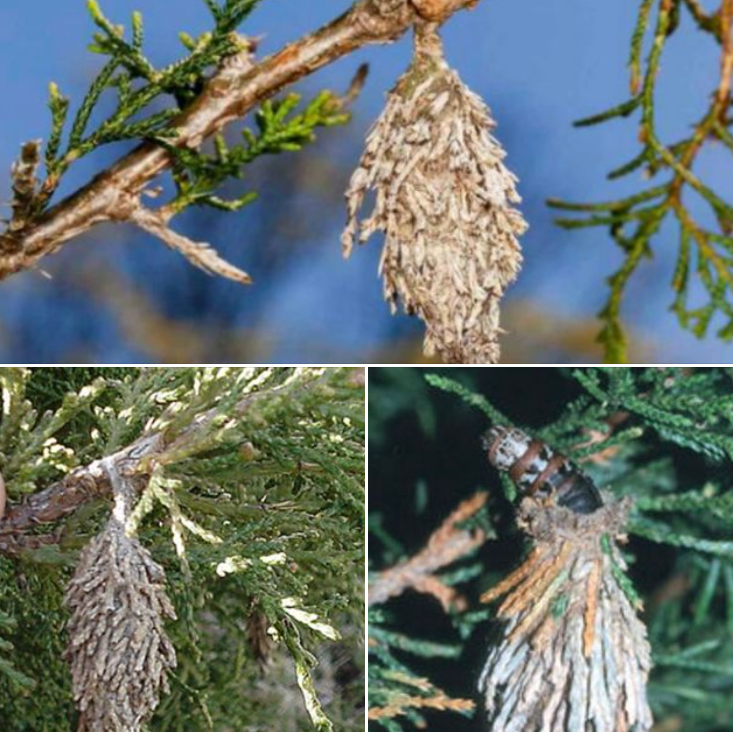Even though their name sounds harmless, Evergreen Bagworms can cause major problems.
These creatures are not worms but rather a moth in its larval stage, and pose serious risks to both deciduous and evergreen trees – causing damage and even death if they are not removed.
Scientifically known as Thyridopteryx ephemeraeformis, Evergreen Bagworms are named so because of the unique protective casing they make around themselves, almost like a bag.
The larvae create these bags by producing a silk-like thread and using it to attach debris like twigs and leaves to their bodies. Ever so slowly, this casing grows bigger, providing the worms with camouflage and shelter.

What is the lifecycle of an Evergreen Bagworm?
The reproductive cycle begins when the female adult lays eggs inside her casing, and this remains stuck to the tree after she dies. Throughout winter, the eggs stay in the casing and eventually hatch in late spring or early summer, producing small larvae. These larvae then head out to search for a suitable tree to stick to, and start creating their own bags using their silk-like thread.
They might start small, but these bags eventually become bigger as the larvae grow and emerge from time to time to get more plant material for their casing. New bags are created as the larvae reaches each new stage.
Within two weeks, the larvae emerge from their casings as adult moths, with the small males flying off to search for females to mate with.

Evergreen Bagworm treatment
While Evergreen Bagworms may seem harmless, they can actually cause significant damage to trees, targeting the foliage and preventing the production of nutrients. This makes the tree weak and susceptible to other illnesses, which can eventually cause the tree to die.
So, how can you keep your trees healthy and prevent damage caused by Evergreen Bagworms? Well, there are a few things you can do, like:
Manually removing the bagworms by hand;
Pruning the affected branches;
Encouraging natural predators like birds and parasitic wasps in your garden; and
Chemically controlling the infestation by using insecticides specifically formulated for bagworms.
Preventing Evergreen Bagworm infestations can also work, using methods like:
Regularly inspecting trees, especially during spring and summer when the larvae hatch, to detect bagworms early on;
Maintaining trees by pruning and ensuring they’re receiving proper nutrients;
Removing bagworms;
Maintaining proper spacing between trees to reduce the risk of bagworm infestation; and
Monitor neighboring trees and plants, especially because bagworms can migrate from one tree to another.
What’s the takeaway? Well, even though Evergreen Bagworms aren’t too obvious and don’t look so dangerous, they can actually cause a lot of destruction. Make sure you’re aware of the damage they can cause and keep your trees and plants in check regularly!
What did you think of this article? Was it helpful for you? Let us know!



